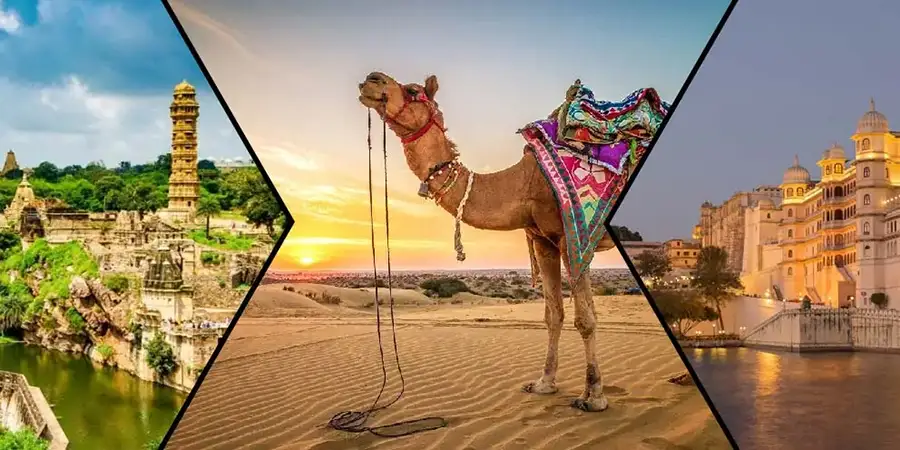For those planning to uncover the grandeur of this Indian state, choosing the right
Tour Operator in Rajasthan
can elevate your travel experience from routine to remarkable.
This travel guide provides a detailed overview of Rajasthan's most royal and historically significant sites,
combining personal experience, expert recommendations, and a touch of storytelling to create a journey that echoes with timeless charm.
Jaipur: The Pink City’s Royal Grandeur
Jaipur, Rajasthan’s capital, is a fusion of urban elegance and historic splendor.
The City Palace complex stands as a living museum, home to royal artefacts, courtyards, and the Chandra Mahal.
A visit to the iconic Hawa Mahal offers more than Instagram-worthy views; it offers insight into Rajput engineering and their emphasis on privacy and ventilation.
Don’t miss the Amer Fort, where intricately carved halls like the Sheesh Mahal (Mirror Palace) and Diwan-i-Khas reflect the artistic peak of Rajput architecture.
The Jaigarh and Nahargarh forts provide panoramic views of the Aravalli ranges and narrate stories of Jaipur’s military might.

Udaipur: The Venice of the East
Udaipur’s serene lakes and opulent palaces form a dreamscape unlike any other.
The City Palace of Udaipur dominates the eastern banks of Lake Pichola, revealing a harmonious blend of Rajasthani and Mughal styles.
From its marble balconies, one can gaze at the ethereal Lake Palace, now a luxury hotel that appears to float like a vision from a bygone era.
Beyond the main city, the
Udaipur Outskirts Village Walk
provides a window into rural Rajasthani life, where age-old customs and crafts still thrive.
This immersive experience is ideal for travelers who seek authenticity beyond palace walls.
Jodhpur: The Blue City and Its Majestic Fort
Jodhpur’s indigo-hued homes and towering Mehrangarh Fort define its skyline.
The fort itself is one of the best-preserved in India, boasting a vast museum, palanquins, miniature paintings, and sweeping views of the city below.
Walking through its formidable gates, like Jai Pol and Fateh Pol, one can sense the battles and victories that once played out here.
Nearby Jaswant Thada, a marble cenotaph built in memory of Maharaja Jaswant Singh II, is a tranquil space reflecting the royal family’s reverence and artistry.
Strolls through the old town's narrow lanes offer a chance to taste Jodhpuri cuisine and shop for handcrafted antiques.
Chittorgarh: The Legendary Citadel of Valor
Chittorgarh is the symbol of Rajput pride, sacrifice, and unwavering courage.
The sprawling fort complex, now a UNESCO World Heritage Site, narrates tales of legendary sieges, including those involving Queen Padmini and Rani Karnavati.
Its towering Victory Tower (Vijay Stambh) and the hauntingly beautiful Padmini Palace serve as poignant reminders of the region’s turbulent past.
To grasp the full scale and legend of the fort, consider a
Chittorgarh sightseeing tour,
which brings the complex’s historical relevance to life through guided narratives and architectural insights.
Bikaner: Desert Forts and Camel Heritage
Bikaner might be lesser known, but it is no less majestic.
The Junagarh Fort, with its intricate stone carvings and elaborate balconies, is unique in that it was never conquered.
Its mix of Mughal and Gujarati designs reflects Bikaner’s status as a trade hub.
The city is also home to the National Research Centre on Camel, where visitors can learn about the desert’s “ships” and even sample camel milk ice cream.
Temples like Karni Mata, famous for its population of rats revered as sacred, add to Bikaner’s unique spiritual and cultural flavor.
Mount Abu: Rajasthan’s Serene Hill Station
Perched in the Aravalli Range, Mount Abu offers a green respite from Rajasthan’s desert landscape.
The Dilwara Temples, carved entirely from white marble, showcase unparalleled Jain artistry.
Each temple, built between the 11th and 13th centuries, demonstrates the finesse of ancient craftsmen.
Nakki Lake, with its mythological connections, is a popular spot for boating and sunsets, while Guru Shikhar offers the highest vantage point in Rajasthan,
perfect for panoramic views and introspective moments.
Experience the Classic Rajasthan Route
For those seeking a curated journey, the
Classic Rajasthan Tour
offers a comprehensive itinerary that includes palatial cities like Jaipur, Udaipur, and Jodhpur, as well as spiritual stops and desert outposts.
The route is designed to balance historical immersion with comfort, combining premium accommodation with expert local guides.
Each stop is selected to build on the last, providing a layered understanding of Rajasthan’s multifaceted heritage.
It’s ideal for first-time visitors who want to experience the full spectrum of royal Rajasthan without logistical hassle.
Explore the Soul of the Desert with the South Rajasthan Route
While northern Rajasthan draws most attention, the southern part reveals hidden gems with its lush landscapes, tribal communities, and ancient temples.
The
South Rajasthan Tour
introduces travelers to lesser-explored districts like Dungarpur and Banswara, where the land is dotted with heritage havelis and serene lakes.
This route offers a more intimate look at the cultural and natural diversity of the state.
Perfect for seasoned travelers, it blends heritage with offbeat exploration, and introduces one to tribal festivals, local crafts, and eco-tourism.
Conclusion: Rajasthan is a Living Museum of Royalty
Rajasthan’s forts, palaces, and villages tell stories not just of kings and queens but of communities, craftsmanship, and continuity.
Each destination holds its own magic—whether it’s the pink-hued lanes of Jaipur, the lakefront serenity of Udaipur, or the legendary battlefield of Chittorgarh.
Travelers should approach the state with curiosity and respect, understanding that beyond the ornate facades lie centuries of resilience, identity, and pride.
Choosing a knowledgeable tour operator, embracing village experiences, and walking the paths of history enriches the journey manifold.